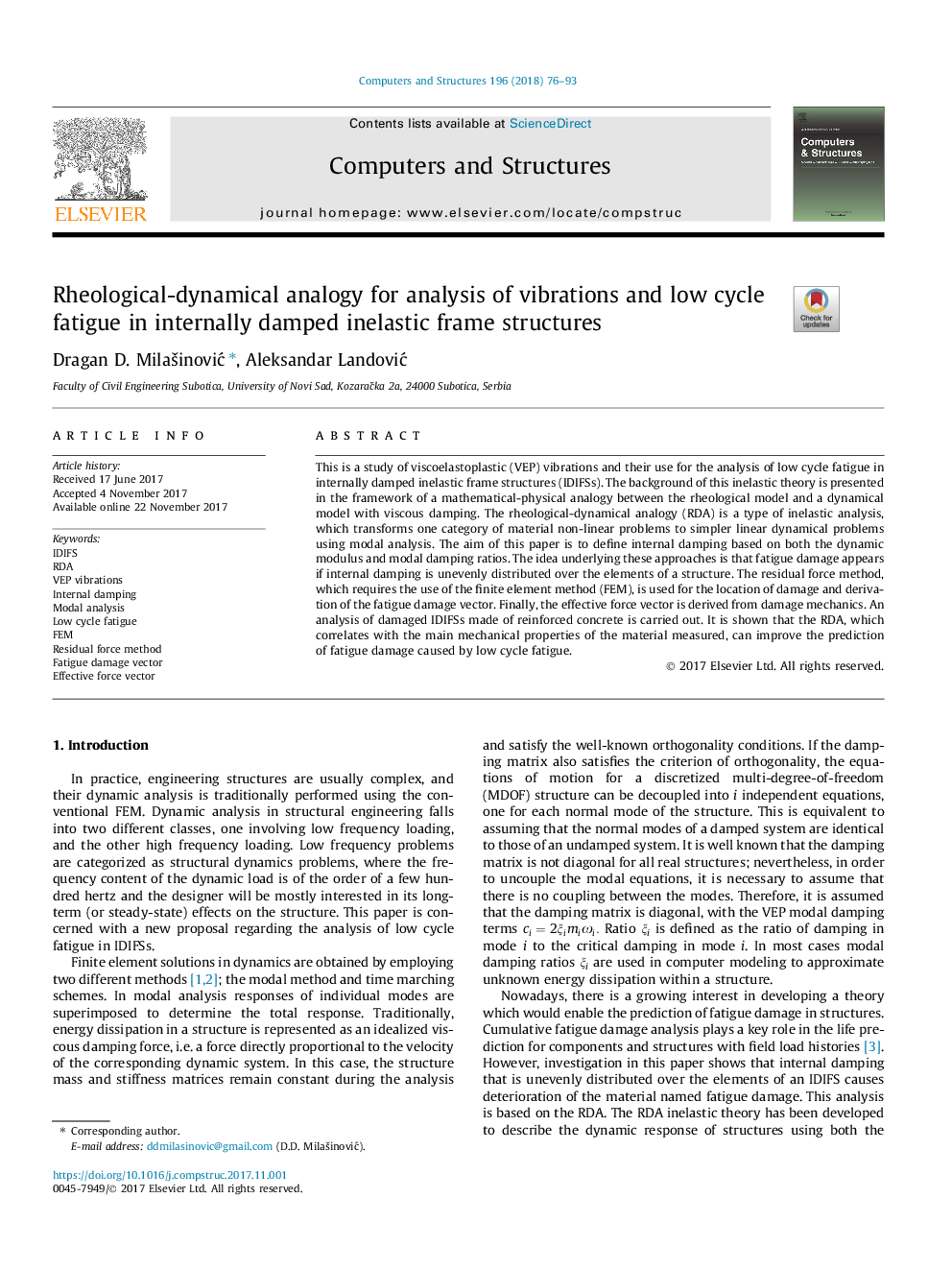| Article ID | Journal | Published Year | Pages | File Type |
|---|---|---|---|---|
| 6924225 | Computers & Structures | 2018 | 18 Pages |
Abstract
This is a study of viscoelastoplastic (VEP) vibrations and their use for the analysis of low cycle fatigue in internally damped inelastic frame structures (IDIFSs). The background of this inelastic theory is presented in the framework of a mathematical-physical analogy between the rheological model and a dynamical model with viscous damping. The rheological-dynamical analogy (RDA) is a type of inelastic analysis, which transforms one category of material non-linear problems to simpler linear dynamical problems using modal analysis. The aim of this paper is to define internal damping based on both the dynamic modulus and modal damping ratios. The idea underlying these approaches is that fatigue damage appears if internal damping is unevenly distributed over the elements of a structure. The residual force method, which requires the use of the finite element method (FEM), is used for the location of damage and derivation of the fatigue damage vector. Finally, the effective force vector is derived from damage mechanics. An analysis of damaged IDIFSs made of reinforced concrete is carried out. It is shown that the RDA, which correlates with the main mechanical properties of the material measured, can improve the prediction of fatigue damage caused by low cycle fatigue.
Related Topics
Physical Sciences and Engineering
Computer Science
Computer Science Applications
Authors
Dragan D. MilaÅ¡inoviÄ, Aleksandar LandoviÄ,
